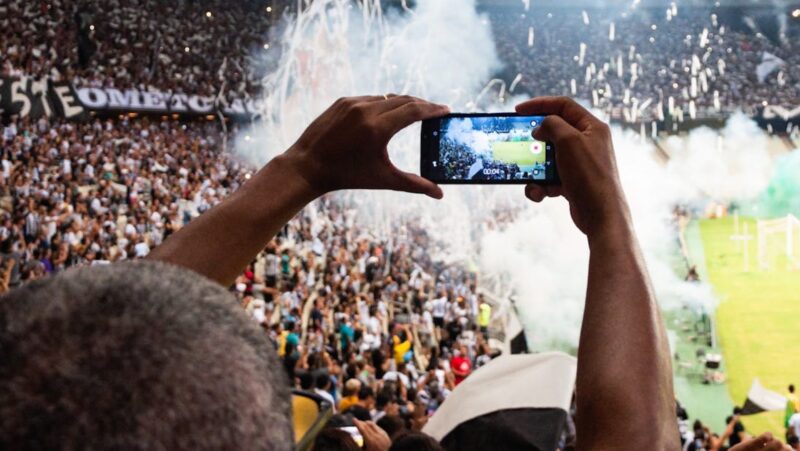
Creating a compelling narrative around your brand is essential in today’s competitive marketplace. With the rise of digital communication, businesses often overlook the power of visual storytelling through physical displays. Enter LED lightboxes—an innovative solution that not only enhances visibility but also engages audiences authentically.
The Visual Appeal of LED Lightboxes
Visual storytelling is a fundamental aspect of effective branding. According to recent studies, 65% of people are visual learners, meaning they retain information better when it is presented visually. This insight has led many brands to leverage imagery as a medium for communication. LED lightboxes represent a cutting-edge approach to this traditional concept, capturing attention with their vibrant illumination and high-quality graphics.
The beauty of LED lightboxes lies in their versatility. They can be employed across various environments, from retail spaces to corporate offices and event venues. The soft glow of LED technology tends to be more inviting than traditional lighting, creating an atmosphere that encourages interaction.
For businesses seeking to make a memorable impact, these exhibition-ready light panels serve as both a canvas and a beacon, drawing in foot traffic and enhancing brand recognition. The ease of setting up such displays means that companies can adapt quickly to changing market demands or promotional needs.
Crafting Your Brand Story
To truly leverage LED lightboxes, brands must first articulate their story. What are the core values or missions that drive your business? How do you differentiate yourself from competitors? These foundational elements should guide the design of your lightbox display.
Understanding Your Audience
Before jumping into design, take a moment to consider your audience. Research their preferences, values, and the kind of messaging that resonates with them. Use this information to shape the imagery and text displayed on your lightbox. For instance, if you’re targeting environmentally-conscious consumers, visuals that highlight sustainable practices or eco-friendly products can be incredibly effective.
Choosing the Right Design Elements
Each design element in your LED lightbox should contribute to your overall message. This includes font choice, colour schemes, and imagery. Here are a few considerations:
• Font: Choose a font that aligns with your brand identity. A modern sans-serif might work well for tech companies, while script fonts may resonate better with artisanal brands.
• Colour: Colours evoke emotions. A vibrant palette can create excitement, while softer tones may convey sophistication. It’s essential to match your colour choices with your brand’s personality.
• Imagery: High-quality images or designs can enhance your message. Whether you opt for photography or illustrations, ensure they reflect your brand’s essence.
The goal is to strike a balance between aesthetics and clarity. A scattering of images and text can confuse the viewer; a streamlined design will communicate more effectively.
Strategic Placement for Maximum Impact
Once you’ve crafted the perfect lightbox, consider where it will be positioned. The placement of your display can significantly affect its visibility and impact. Here are a few suggestions:
• High-Traffic Areas: Position your lightbox where foot traffic is highest—such as near the entrance of your store or at event registration points. This ensures maximum exposure.
• Themed Displays: If your lightbox is part of a larger themed display, ensure it integrates seamlessly. Cohesion between various display elements will create a more immersive experience for the audience.
• Event Context: For trade shows or exhibitions, think about the wider context. Ensure your lightbox speaks to the event’s theme, appealing to potential clients and partners.
The Benefits of Dynamic Content
One of the best features of LED lightboxes is their capacity for dynamic content. Consider incorporating interchangeable graphics or digital screens that allow you to update your message easily. Seasonal promotions, new product launches, or even customer testimonials can be highlighted through quick adjustments.

Dynamic content keeps your display fresh and invites repeat visits. People love discovering what’s new, so changing your lightbox graphics regularly can pique interest and drive engagement.
Sustainability Considerations
As brands increasingly adopt sustainable practices, it’s essential to consider the ecological impact of your marketing materials. LED lightboxes often outshine traditional displays in this regard. They consume less energy and offer longer lifespans, reducing waste over time. Furthermore, many modern lightboxes utilize sustainable materials in their construction.
Being transparent about your commitment to sustainability not only elevates your brand image but can also be integrated into the story told by your lightbox. Highlight your eco-focused initiatives alongside your products, telling a cohesive story of integrity.
Conclusion: Bringing Your Brand to Life
In summary, LED lightboxes are more than mere displays; they are tools for storytelling that can significantly heighten your brand’s visibility and engagement. By understanding your audience, choosing the right design elements, and strategically placing your lightbox, you can effectively communicate your brand narrative.
Adaptive to your changing needs and eco-conscious, LED lightboxes encapsulate the future of visual marketing. As businesses strive for authentic connections with consumers, these displays offer a pathway to not just inform but inspire. Embrace this transformative potential and let your brand story shine vividly through the power of light.












